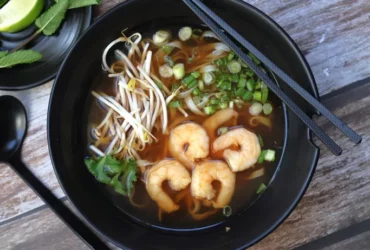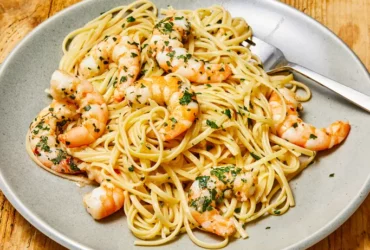Ingredients
For the fish
The ingredients required for this Blackened Fish Recipe are:
- Fish: You will need 4 fish fillets, preferably made from red snapper, tilapia, or catfish.
- Mild-flavored fish work best for this recipe as they won’t overpower the flavors of the seasoning blend.
- Blackening Seasoning: Mix together 2 tablespoons of thyme, 1 tablespoon of paprika, 1 tablespoon of cayenne pepper, 1 tablespoon of dried oregano, 1 teaspoon of garlic powder, and 1/2 teaspoon of salt.
- Olive Oil: You will need 2 tablespoons of olive oil to coat the fish fillets before blackening.
- Lemon Wedges: Serve with lemon wedges on the side to add a touch of citrus to the dish.
- Butter and Garlic: Melt 2 tablespoons of unsalted butter with 1 clove of in a small saucepan over low heat.
The ingredients above will yield four servings. Be sure to adjust the quantities according to your needs and preferences.
4 fish fillets (such as red snapper or tilapia)
The ingredients used for the Blackened Fish Recipe are crucial to achieving that distinctive, crispy crust on the outside while maintaining a tender and juicy interior. Here’s what you’ll need:
The fish fillets are the star of the dish, providing both flavor and texture. For this recipe, it is recommended to use either red snapper or tilapia as they have a delicate flavor and firm texture that complements the bold flavors of the blackening seasoning.
Red snapper has a slightly sweet flavor and a firm texture that pairs well with the spicy and savory flavors of the blackening seasoning. Tilapia, on the other hand, is mild in flavor and soft in texture, which makes it an excellent choice for those who prefer a milder taste.
For each fish fillet, you will need about 1/4 cup of blackening seasoning, which is typically a mixture of spices such as paprika, garlic powder, onion powder, thyme, and oregano. The exact proportions may vary depending on the recipe, but this blend provides a robust flavor profile that complements the fish perfectly.
Other ingredients that are commonly used to enhance the flavor of the blackened fish include butter, olive oil, lemon juice, and chopped parsley or scallions. The butter adds a richness and creaminess to the dish, while the olive oil helps to prevent the fish from sticking to the pan. Lemon juice provides a touch of brightness and acidity that cuts through the richness of the dish.
Lastly, be sure to have some salt and pepper on hand to season the fish before blackening it. This will help bring out the natural flavors of the fish and provide a nice balance to the bold flavors of the blackening seasoning.
2 lemons
The ingredients for this delicious Blackened Fish Recipe include:
Protein: This recipe calls for 4 fish fillets, preferably blackened redfish, red snapper, or any other firm white fish that can hold up to the bold flavors and texture of the dish.
Lemmony Twist:
- 2 lemons
In this recipe, lemons are used in two forms – juice and zest. The acidity in lemon juice helps to balance the richness of the fish and adds a burst of citrus flavor.
The lemon zest is grated over the fish before blackening it, adding an aromatic and slightly bitter note that complements the bold flavors of the spices.
1/2 cup buttermilk
In order to achieve the perfect blackening flavor for your fish dish, it’s essential to use high-quality ingredients, and one of the key components is buttermilk.
When a recipe calls for 1/2 cup of buttermilk in the context of a Blackened Fish Recipe, it typically refers to a specific type of buttermilk that has been mixed with additional seasonings or ingredients to enhance its flavor.
However, when making traditional blackened fish, you may actually use regular milk instead of buttermilk, as some recipes don’t specify the need for buttermilk’s acidity and tanginess.
Traditionally, buttermilk is used in Southern cuisine, where it’s commonly employed to marinate meats or add moisture to baked goods. In this case, its acidity helps to tenderize the fish while also adding a subtle flavor that complements the blackening spices.
If you choose to use regular milk instead of buttermilk, keep in mind that it may affect the overall taste and texture of your dish slightly. Regular milk has a milder flavor than buttermilk, so it’s essential to balance out the seasoning accordingly.
When preparing the marinade for your blackened fish, you can mix 1/2 cup of regular milk with some cayenne pepper, paprika, garlic powder, onion powder, salt, and black pepper. The acidity in buttermilk would help to break down the proteins in the fish, making it tender and juicy.
However, if you’re using regular milk, be sure not to over-marinate the fish, as this can result in a mushy texture. Typically, a 15-30 minute marinade is sufficient for most blackened fish recipes.
In summary, while buttermilk is commonly used in traditional blackened fish recipes due to its acidity and tanginess, you can still achieve excellent results using regular milk as a substitute. Just be mindful of the flavor balance and texture adjustments you may need to make accordingly.
1 tsp hot sauce (such as Tabasco)
The ingredients for a delicious blackened fish recipe are as follows:
- A 4-6 oz fish fillet (such as red snapper, tilapia, or catfish)
- 1 tsp hot sauce (such as Tabasco)
- 2 tbsp blackening seasoning
- 1 tsp garlic powder
- 1 tsp onion powder
- 1 tsp paprika
- 1/2 tsp cayenne pepper (optional)
- 1/2 tsp salt
- 1/4 tsp black pepper
- 2 tbsp butter, divided
- 2 lemons, cut into wedges (optional)
- Fresh parsley or thyme for garnish (optional)
The hot sauce used in this recipe adds a spicy kick to the blackening seasoning. Tabasco is a popular choice because of its distinctive flavor and thick, syrupy texture. However, you can substitute it with other hot sauces such as Frank’s RedHot or Cholula.
For the seasoning blend
The seasoning blend for blackening fish typically consists of a combination of spices, herbs, and other ingredients that enhance the flavor and aroma of the dish.
Here are the key ingredients in a traditional seasoning blend:
- Cayenne Pepper: This is a staple ingredient in blackened fish recipes, adding a spicy kick to the dish. Use about 1-2 teaspoons of cayenne pepper per pound of fish.
- Paprika: A mild to medium-hot spice made from ground bell peppers or sweet peppers, paprika adds depth and smokiness to the seasoning blend. Use about 2 tablespoons of paprika per pound of fish.
- Garlic Powder: Dehydrated garlic powder is a convenient way to add the flavor of garlic without having to chop fresh cloves. Use about 1 tablespoon of garlic powder per pound of fish.
- Oregano: Dried oregano adds an earthy, slightly bitter flavor to the seasoning blend. Use about 1 teaspoon of dried oregano per pound of fish.
- Thyme: Fresh or dried thyme is another herb commonly used in blackened fish recipes. It has a savory, slightly minty flavor. Use about 1 teaspoon of fresh or dried thyme per pound of fish.
- Cumin: Ground cumin adds a warm, earthy flavor to the seasoning blend. Use about 1/2 teaspoon of ground cumin per pound of fish.
- Black Pepper: Freshly ground black pepper is essential for adding depth and heat to the seasoning blend. Use as needed.
For a more complex flavor profile, you can add other ingredients like onion powder, dried basil, or celery salt to the seasoning blend.
The ratio of spices in your seasoning blend will depend on your personal taste preferences. Feel free to adjust the quantities to suit your taste buds.
You can also store any leftover seasoning blend in an airtight container for up to 6 months.
2 tbsp paprika
Paprika is a spice made from ground sweet or bell peppers, and it plays a crucial role in the flavor profile of the blackened fish recipe.
The two tablespoons of paprika called for in this recipe contribute to the dish’s characteristic smoky, slightly sweet, and savory flavors.
Paprika has a deep red to brown color due to its high content of carotenoid pigments, which are responsible for its vibrant appearance.
When using paprika in cooking, it is essential to note that there are two main types: sweet and smoked paprika.
Sweet paprika is milder and sweeter, whereas smoked paprika has a more intense smoky flavor, often used to add depth to dishes.
In this blackened fish recipe, the choice of sweet or smoked paprika may depend on personal preference; however, some chefs recommend using a combination of both for an added layer of complexity.
The heat tolerance and cooking time of the fish will also influence the amount of paprika used in the spice blend.
Some cooks prefer to mix the paprika with other spices such as garlic powder, onion powder, cayenne pepper, thyme, or oregano to create a more balanced flavor profile for their blackened fish recipe.
The key is to experiment and adjust the seasoning according to taste, ensuring that the flavors complement each other without overpowering the delicate taste of the fish.
1 tsp garlic powder
The ingredients for this Blackened Fish Recipe play a crucial role in bringing out the bold flavors and textures that define this dish.
One key ingredient, 1 teaspoon of garlic powder, adds an aromatic depth to the recipe. Garlic powder is a staple in many cuisines, particularly in Mediterranean, Mexican, and Southern American cooking.
Garlic powder is made by drying and grinding garlic cloves into a fine powder, which retains much of the flavor and aroma of fresh garlic but has a longer shelf life. It is often used as a convenient substitute for minced or chopped garlic, especially when recipes call for large quantities.
When using garlic powder in the Blackened Fish Recipe, it’s essential to note that a small amount goes a long way. The 1 teaspoon called for will infuse the dish with a subtle yet noticeable garlicky flavor without overpowering the other ingredients.
The use of garlic powder also allows cooks to control the intensity of the garlic flavor more easily than using fresh garlic, which can be overwhelming if not used judiciously. Additionally, garlic powder is less likely to cause stomach upset in individuals who are sensitive to garlic or have digestive issues.
In summary, 1 teaspoon of garlic powder plays a vital role in enhancing the flavors and aromas present in the Blackened Fish Recipe, making it an essential ingredient that should not be overlooked or omitted.
1 tsp onion powder
When it comes to adding flavor to our Blackened Fish Recipe, a key ingredient plays a crucial role – Onion Powder.
Onion powder is a dehydrated and powdered form of onions that has been cooked down to remove excess moisture. This process allows for the concentrated flavor and aroma of onions to be packed into a single teaspoon.
The 1 teaspoon of onion powder called for in this recipe adds a depth of flavor that complements the spicy seasoning blend perfectly. Onion powder brings a mild sweetness and a hint of savory flavor, balancing out the heat from the blackening seasoning.
It’s worth noting that onion powder is not just a substitute for fresh onions – it has a distinct flavor profile that is often preferred in certain dishes like this Blackened Fish Recipe. The drying process removes some of the sharpness and pungency found in fresh onions, making them more palatable to some people.
For those who are concerned about the authenticity of using onion powder versus fresh onions, it’s worth noting that many traditional blackening recipes do indeed use dried spices like onion powder. This is because the drying process allows for a more intense and consistent flavor, which is ideal when cooking in large quantities or achieving a specific taste profile.
In this Blackened Fish Recipe, we’re aiming to create a bold and spicy flavor that complements the rich flavor of the fish. The 1 teaspoon of onion powder helps to round out the flavors and add a subtle savory note that enhances the overall dish.
1 tsp salt
The ingredient ‘1 tsp salt’ is a crucial component in the preparation of blackened fish, which requires a blend of spices and seasonings to achieve its signature dark color and bold flavor.
In this particular recipe, the salt is used as one of the primary ingredients to balance out the flavors and enhance the overall taste experience of the dish.
Salt serves not only as a seasoning but also plays a significant role in bringing out the natural flavors of the fish by reducing bitterness and enhancing sweetness.
The type of salt used can vary depending on personal preference, with some opting for kosher salt, sea salt, or even Himalayan pink salt to add a touch of minerality to the dish.
When using 1 teaspoon of salt in this recipe, it’s essential to note that the amount can be adjusted based on individual taste and the type of fish being used.
The key is to strike a balance between seasoning and overpowering the delicate flavor of the fish with too much salt.
1/2 tsp black pepper
The ingredient list for the Blackened Fish Recipe typically includes a variety of spices, seasonings, and herbs that work together to create a bold and aromatic flavor profile.
One essential component is black pepper, which plays a crucial role in enhancing the overall flavor of the dish.
In this recipe, 1/2 tsp (teaspoon) of black pepper is called for, which may seem like a small amount but has a significant impact on the final result.
Here’s what you need to know about using black pepper in your Blackened Fish Recipe:
- Quality matters: Use high-quality black peppercorns that are fresh and fragrant for the best flavor.
- Dosage is key: The 1/2 tsp amount is a good starting point, but you can adjust to taste, depending on your personal preference for pepper intensity.
- Combine with other spices: Black pepper pairs well with herbs like thyme, oregano, and paprika, so don’t be afraid to combine it with other spices in the recipe.
- Aroma enhancement: The aroma of black pepper is released when cooked, which adds depth and warmth to the dish.
In summary, 1/2 tsp of black pepper is a fundamental ingredient in Blackened Fish Recipes, providing an essential flavor component that enhances the overall taste experience.
1/4 tsp cayenne pepper
Cayenne pepper is a key ingredient in many spicy dishes, and it plays a crucial role in the Blackened Fish Recipe.
In this recipe, 1/4 teaspoon of cayenne pepper is used to add a touch of heat and flavor to the fish.
The amount of cayenne pepper called for may seem small, but it packs a punch and can make all the difference in bringing out the flavors of the dish.
What is Cayenne Pepper?
- Cayenne pepper is a type of chili pepper that has been dried and ground into a fine powder.
- It is made from the fruit of the Capsicum annuum plant, which is a member of the nightshade family.
- The heat level of cayenne pepper can vary depending on the variety and the ripeness of the peppers when they are harvested.
Tips for Using Cayenne Pepper
- Start with a small amount of cayenne pepper, especially if you’re not used to spicy foods. You can always add more, but it’s harder to remove the heat once it’s added.
- Use cayenne pepper to add depth and warmth to dishes, rather than just relying on salt or other seasonings.
- Cayenne pepper can be used in a variety of dishes beyond seafood, including meat, vegetables, soups, and sauces.
Instructions
Preparing the fish
To prepare the fish for blackening, you’ll want to start by selecting the right type of fish. Look for a firm-fleshed fish with a high fat content, such as mahi-mahi or red snapper. These types of fish will hold their shape well and provide a rich flavor.
Rinse the fish under cold water to remove any impurities, then pat it dry with paper towels. This helps to create a good surface for the spice blend to adhere to.
Next, season the fish liberally on both sides with kosher salt. The kosher salt will help to balance out the flavors in the dish and provide a bit of texture.
Mix together your blackening seasoning blend according to your preference. You can use store-bought or homemade, but make sure it’s a combination of spices that includes paprika, cayenne pepper, garlic powder, onion powder, thyme, and oregano. The key is to find the right balance between smoky heat and aromatic depth.
Press both sides of the fish firmly with your fingers to adhere the seasoning blend evenly. Make sure to get it into all the nooks and crannies for maximum flavor.
Let the fish sit at room temperature for about 30 minutes before cooking to allow the seasonings to penetrate the meat. This is an important step, as it will help the flavors meld together and create a more intense flavor profile.
Just before cooking, brush the tops of the fish with a bit of oil to prevent sticking and promote even browning. Use a neutral-tasting oil like avocado oil or grapeseed oil, as they have high smoke points and won’t add flavor to the dish.
Now that the fish is prepared, it’s ready for cooking! In the next step, we’ll discuss the best ways to achieve that perfect blackened crust.
Preheat the oven to 400°F (200°C).
The first step in preparing a delicious blackened fish dish involves preheating the oven to a precise temperature, which plays a crucial role in ensuring that the fish cooks evenly and retains its moisture.
To start, it’s essential to set the oven to 400°F (200°C). This temperature allows for a nice balance of browning on the outside while maintaining a tender and flaky texture on the inside.
Using an accurate thermometer is vital in achieving this precise temperature. A digital thermometer can be inserted into the oven to ensure that it has reached the desired temperature.
Once the oven has been preheated, you’ll need to prepare your fish for cooking. This typically involves seasoning it with a blend of spices and herbs, including paprika, garlic powder, onion powder, salt, pepper, and cayenne pepper.
The combination of these seasonings will add a depth of flavor to the fish and provide a nice aroma while it’s cooking. Make sure to evenly coat both sides of the fish with the spice blend for consistent flavor.
In a large bowl, mix together buttermilk and hot sauce.
When it comes to cooking up a delicious blackened fish recipe, having clear and concise instructions is crucial. The first step involves creating a marinade that will not only add flavor but also help tenderize the fish. In a large bowl, mix together buttermilk and hot sauce. This may seem like an unusual combination, but trust us when we say it’s a game-changer.
The key is to use a high-quality buttermilk that has not been ultra-pasteurized. You want the acidity in the buttermilk to help break down the proteins on the surface of the fish, making it more receptive to the flavors you’re about to add. The hot sauce adds a spicy kick that will complement the smoky flavor of the blackening seasoning.
Now, let’s talk about the importance of using the right type of hot sauce. You want something that has a good balance of heat and depth of flavor. A Louisiana-style hot sauce is a great choice, as it typically has a thick, spicy paste that will add a rich texture to your marinade.
Once you’ve mixed together the buttermilk and hot sauce, stir well to combine. Make sure to get into all corners of the bowl and scrape down the sides with a rubber spatula to ensure everything is fully incorporated.
Next, take your fish fillets (we recommend using red snapper or mahi-mahi for this recipe) and place them in the marinade. You want to make sure each piece of fish is coated evenly, so be gentle as you add them to the bowl.
Cover the bowl with plastic wrap and refrigerate for at least 30 minutes to allow the flavors to penetrate the fish. The longer it sits, the better it will taste!
After the fish has marinated, remove it from the refrigerator and let it come to room temperature before cooking. Preheat your skillet or grill pan over medium-high heat and add a small amount of oil to coat the bottom.
Add the blackening seasoning to the hot pan and cook for 1-2 minutes, stirring constantly, until fragrant. This will give you that nice crusty exterior we’re looking for in our blackened fish recipe!
Now it’s time to add the fish to the pan! Place the fillets skin side up (if they have skin) and cook for 3-4 minutes or until golden brown. Flip them over and cook for an additional 2-3 minutes, until cooked through.
Remove the fish from the heat and let it rest for a minute or two before serving. This will allow the juices to redistribute and make each bite even more tender and flavorful!
Add the fish fillets to the marinade and refrigerate for at least 30 minutes.
To ensure that the fish fillets are properly seasoned and have a deep, dark crust on the outside, it’s essential to follow these steps carefully.
Firstly, add the fish fillets to the marinade. The marinade typically consists of a mixture of spices, herbs, and other seasonings that help to enhance the flavor and texture of the fish.
Making sure the fish is fully coated in the marinade, place it in a shallow dish or tray and cover it with plastic wrap or aluminum foil.
Next, refrigerate the marinated fish for at least 30 minutes. This allows the flavors to penetrate the meat and helps to tenderize the fish.
The length of time you choose to marinate your fish will depend on how strong you like the flavors and how much time you have available. However, a minimum of 30 minutes is recommended for optimal results.
Once the fish has been in the refrigerator for at least 30 minutes, remove it from the marinade and let it sit at room temperature for 10-15 minutes before cooking.
This step helps to prevent the fish from cooking too quickly on the outside while remaining raw or undercooked on the inside. By letting it sit at room temperature for a short period of time, you can help ensure that your fish is cooked evenly and thoroughly.
After removing the fish from the refrigerator and letting it sit at room temperature, proceed to cook it according to your chosen method. For this blackened fish recipe, heat up a skillet over high heat and add a small amount of oil before adding the seasoned fish.
Cook for 3-4 minutes on each side or until the fish is cooked through and has a dark, crispy crust on both sides. Serve immediately and enjoy!
Finishing Touches
Cooking the fish
The finishing touches are essential to achieve that perfect blackened crust on the fish. After seasoning the fish with the spice blend, it’s time to sear it in a hot skillet.
Heat a cast-iron or stainless steel skillet over high heat until it reaches a smokin’ hot temperature. You can test the heat by flicking a few drops of water onto the surface – if they sizzle and evaporate quickly, the pan is ready.
Add 2 tablespoons of butter to the preheated skillet and let it melt, then tilt the pan to ensure the butter covers the entire surface.
Once the butter is melted and foamy, place the fish in the skillet, skin side up (if it has skin). You may hear a nice sizzling sound as the fish hits the hot pan – this is what you want!
Let the fish cook for 3-4 minutes on the first side, depending on the thickness of the fish. You’ll know it’s ready to flip when it starts to develop a nice blackened crust and the edges start to curl slightly.
Flip the fish over and cook for an additional 2-3 minutes, until it reaches your desired level of doneness. Use a fish spatula or tongs to gently turn the fish – you want to avoid breaking up the delicate flesh.
Once the fish is cooked through, remove it from the skillet and place it on a plate or platter. Drizzle with additional butter if desired, and garnish with chopped herbs like parsley or chives for a pop of color and freshness.
Blackened fish is best served immediately, while the crust is still crispy and fragrant. Serve hot and enjoy!
Note: Be careful when handling hot skillets and sharp objects in the kitchen – it’s always better to err on the side of caution and use oven mitts or tongs to protect your hands.
Remove the fish from the marinade and pat dry with paper towels.
The final stages of preparing Blackened Fish involve a few crucial steps to achieve that perfect, crispy exterior and tender interior.
After marinating the fish in a mixture of spices and herbs, it’s time to remove them from the marinade and pat dry with paper towels. This step is often overlooked but is essential in creating a good blackening effect.
The excess moisture on the surface of the fish can prevent the seasonings from adhering properly, which is what gives the dish its characteristic flavor and texture. By removing any excess moisture, you’re allowing the seasonings to penetrate deeper into the meat, resulting in a more intense flavor profile.
To remove the fish from the marinade, gently lift it out using a pair of tongs or a slotted spoon, being careful not to splash any of the acidic liquid onto the surrounding areas. Once removed, place the fish on a clean surface or tray lined with paper towels to pat dry.
Gently press down on the fish using paper towels to absorb as much moisture as possible. This is an important step in ensuring that your blackening process yields the best results. Be careful not to press too hard, which can cause the fish to tear or become misshapen.
Sprinkle both sides of the fish with the seasoning blend, pressing gently to adhere.
The finishing touches on this Blackened Fish Recipe involve adding a savory seasoning blend to the fish, which will enhance its flavor and aroma.
Sprinkling both sides of the fish with the seasoning blend is an essential step in achieving that perfect blackened flavor. To do this effectively, gently press the spice blend onto the fish, making sure it adheres evenly to both surfaces.
It’s worth noting that pressing the spices on will help ensure they don’t fall off during cooking, which can result in a less flavorful dish. This simple step adds depth and character to the dish, setting it apart from other seafood recipes.
The seasoning blend typically consists of a mix of paprika, garlic powder, onion powder, dried thyme, cayenne pepper, and black pepper. When combined with the delicate flavor of the fish, these spices create a truly mouthwatering experience.
Heat a large skillet over high heat and add 12 tbsp oil (such as canola or vegetable).
The final stage of cooking for the Blackened Fish Recipe involves the application of finishing touches, which play a crucial role in enhancing the overall flavor and presentation of the dish.
In this case, the instructions involve heating a large skillet over high heat and adding 12 tablespoons of oil, such as canola or vegetable. This step is essential to create a sizzling hot surface that will enable the fish to develop its characteristic blackened crust.
The type of oil used in this process should be chosen carefully. Canola oil and vegetable oil are popular options due to their high smoke points, which allow them to handle high temperatures without breaking down or smoking.
Once the skillet is hot, add a generous amount of oil, making sure that the surface is evenly coated. This will prevent the fish from sticking to the pan as it cooks and help create a delicate, caramelized crust.
The temperature of the heat source should be carefully monitored during this process. The goal is to achieve a smoky, hot environment that is ideal for cooking the blackened fish. A thermometer can be used to ensure the heat reaches the optimal temperature, typically between 400°F and 450°F (200°C and 230°C).
While waiting for the skillet to heat up, take this opportunity to prepare any additional ingredients or seasonings needed for the recipe. This might include mixing together spices like paprika, garlic powder, onion powder, thyme, and cayenne pepper to create a bold flavor profile.
Once the oil is hot and the fish is ready to be cooked, proceed with adding it to the skillet. The heat will immediately start working its magic, producing a delicate blackened crust on the surface of the fish while sealing in the juices within.
The finishing touches for this Blackened Fish Recipe are not just limited to the cooking process alone. Garnishing the dish with fresh herbs, such as parsley or thyme, can add a touch of color and fragrance, making it visually appealing and aromatic.
Sear the fish for 34 minutes per side, or until golden brown and cooked through.
The final steps to achieve a perfectly blackened fish involve adding some finishing touches, which will elevate the dish to new heights. Here’s what you need to do:
Sear the fish: Place the fish on a preheated skillet or grill pan over medium-high heat.
Cooking time: Sear the fish for 34 minutes per side, or until it reaches your desired level of doneness. The key is to achieve a golden brown crust on both sides while keeping the interior cooked through.
Important note: The cooking time may vary depending on the thickness of the fish and your personal preference for doneness. It’s always better to err on the side of undercooking, as you can always cook it a bit longer if needed.
Here are some tips to ensure you get that perfect sear:
- Sear in batches: If cooking multiple pieces of fish, make sure to sear them in batches to prevent overcrowding the skillet. This will help you achieve an even crust and cook the fish more efficiently.
- Use a thermometer: To ensure the fish is cooked through, insert a meat thermometer into the thickest part of the fish. The internal temperature should reach 145°F (63°C) for medium-rare, 160°F (71°C) for medium, and 170°F (77°C) for well-done.
- Don’t press down: Resist the temptation to press down on the fish while it’s searing. This can cause the juices to be pushed out, resulting in a dry piece of fish.
- Let it rest: Once the fish is cooked, remove it from the heat and let it rest for a few minutes. This will allow the juices to redistribute, making the fish even more tender and flavorful.
- Best Clay Alternatives for 2025 - April 22, 2025
- Best Leadfeeder Alternatives for 2025 - April 22, 2025
- Best Snov.io Alternatives for 2025 - April 21, 2025















